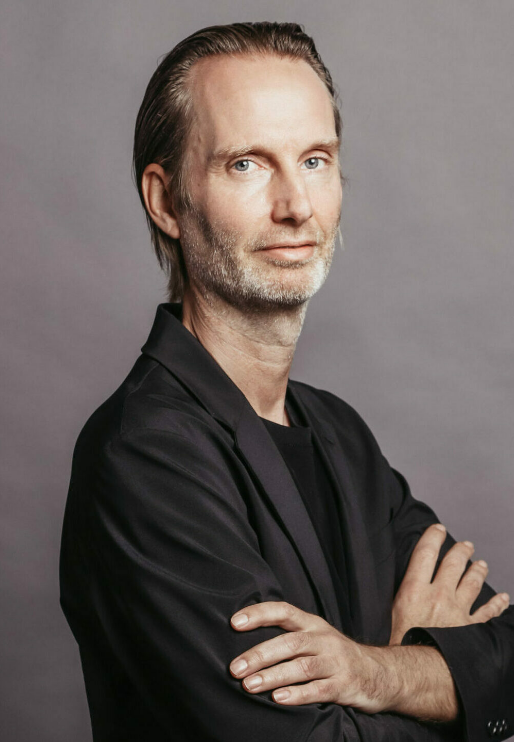Brand Space Design at EAST END: Sensory staging that actively incorporates megatrends and social relevance
“Where is the latest shit? Where is it happening? Where is the merger? Where is fashion? Where is music? Where is architecture? I see a few prints, a few posters, but that’s not it. Bauhaus, what is that supposed to be? (…) I can’t indulge in that anymore. It has to move forward (…).” These were the words of Mike Meiré, one of Germany’s most influential designers, in a WDR feature, questioning the advancements in the design world. His questions and statements have since become a meme, but the essence of his message remains highly relevant: it challenges the search for innovation and the limits of traditional design approaches.
EAST END embodies this critical perspective on the evolution of design. With its in-house Brand Space Design team, the agency unites architecture, design, scenography, marketing, concept development, and creativity – but it’s about much more than just spatial design. It’s about creating a brand identity that engages visitors not only visually but through all senses. The space becomes a living element of a brand. The design processes are anything but linear – they are dynamic, creative, and deeply rooted in social themes.
Social topics and megatrends as the foundation of brand worlds
Megatrends are profound, long-term societal, technological, and economic changes that have a global impact and significantly influence human behavior as well as market developments. The world of Brand Space Design is shaped by megatrends and social developments that, now more than ever, define how brands interact with their consumers. Topics such as diversity, inclusion, and sustainability are not just empty buzzwords but shape the creation of brand spaces. Especially against the backdrop of social movements, the pursuit of authenticity, and the growing awareness of societal issues, brands and their identities must actively engage in these discussions. EAST END takes it a step further by viewing Brand Space Design as a form of cultural staging that extends beyond functional spaces.
“Engaging with megatrends, such as the pursuit of individuality, is not an optional aspect of Brand Space Design for us,” explains Philipp, Creative Director at EAST END. “We ask ourselves how brands can influence these developments – whether through their impact on social currents or by embedding their brand worlds into social structures.”
Scenography as a multisensory experience
A central element of Brand Space Design is scenography – the deliberate design of spaces to create experiences that go beyond the visual. Through light, materiality, acoustics, and spatial guidance, an immersive brand world emerges that evokes emotions and intuitively guides visitors. It’s not just about aesthetics but also about dramaturgy: How does a person move through the space? What atmosphere welcomes them? What story does the environment tell?
Durex and the “Cabinet of Pleasure”: A sensory experience in the festival context
A remarkable example of implementing social relevance in Brand Space Design was Durex’s appearance at Parookaville 2023. It was not just about presenting a product – rather, the focus was on creating an experience that engaged the senses and translated brand values into space. “It is important that we do not treat the topic of contraception as an uncomfortable discussion but as an act of self-determination and joy,” explains Philipp. “We want to create a space that, through its sensory aesthetics, enables festival-goers to engage playfully yet profoundly with the topic.”
The choice of the “Cabinet of Pleasure” as an experience container was no coincidence. The space served as an experimental field – a place where visitors could interact with various materials, colors, and forms. Sensory experiences such as different textures and the use of light created an atmosphere in which visitors were involved both emotionally and intellectually. The space itself was the result of deep reflection on how festivals, as cultural and social events, can address contraception and sexual health.
“For us, it is crucial that the experience is not just about the visible but also about the tactile and the acoustic. The materiality of the space should serve as an invitation to expand one’s perception and develop a new perspective,” says Philipp. “A festival is the perfect place to experiment with different materials and sensory impressions while fostering a socially relevant discourse.”
Catrice and Vogelball: Diversity as the core of brand identity
Another example of the profound engagement with social topics is Catrice’s presence at Vogelball 2024. Vogelball, as an expression of diversity and queer culture, provided the perfect platform for Catrice to position itself as an ally of the queer community. Catrice’s values are reflected in the brand – promoting individuality and self-confidence is an integral part of its identity. “Our goal is to visualize this claim in a space and make it tangible for visitors,” explains Philipp.
The stand at Vogelball focused on interactivity and creativity. At its center was a walk-in kaleidoscope – a metaphor for diversity and the colorful expression of identity. “The kaleidoscope is not just a visual highlight but also a symbolic element that emphasizes the play with perspectives and the beauty of diversity,” says Philipp. “By combining makeup stations, DIY areas, and interactive photo moments, we want to offer festival-goers an experience that is both creative and inclusive.”
The space itself was a place of exchange, inspiration, and celebration of individuality. “We engage deeply with the festival context and the values of diversity. The space is not just a stage for Catrice but also a place where people can connect and express their creativity,” adds Philipp.
The philosophy of EAST END: Brand worlds as experience spaces
At EAST END, Brand Space Design goes beyond pure aesthetics. “It’s about creating brand experiences that touch visitors, inspire them, make them think, and elevate their perception to a deeper level,” explains Philipp. The use of colors, materials, light, and forms is chosen not just for aesthetic reasons but also to establish an emotional connection with the brand. “Scenography allows us to stage brands in a way that remains memorable. Thoughtful spatial design creates tension points, directs attention, and establishes intuitive connections between people and brands,” Philipp adds.
“Our Brand Space Design at EAST END is a form of cultural staging. We view spaces as stages where brands can tell their stories and communicate their values and messages,” says Philipp. “The challenge is to strike a balance between artistic design, social responsibility, and, of course, an advertising effect so that the space not only impresses visually but also resonates on a deeper level.”
The philosophy of EAST END is that brand worlds must not only be created but also experienced. The dialogue between the brand and the visitors is at the center – a dialogue that goes far beyond the space – that is precisely “the latest Shit.”

